[ad_1]
Prunus spp.
I really like fruit bushes, however some years I stand beneath my apples stuffed with codling moth larvae or my peaches that by no means fruited as a result of a late frost killed all of the buds, and I fantasize about mowing them down with a chainsaw.
Not plums, although. They’re my dependable, easygoing, happy-go-lucky companions.
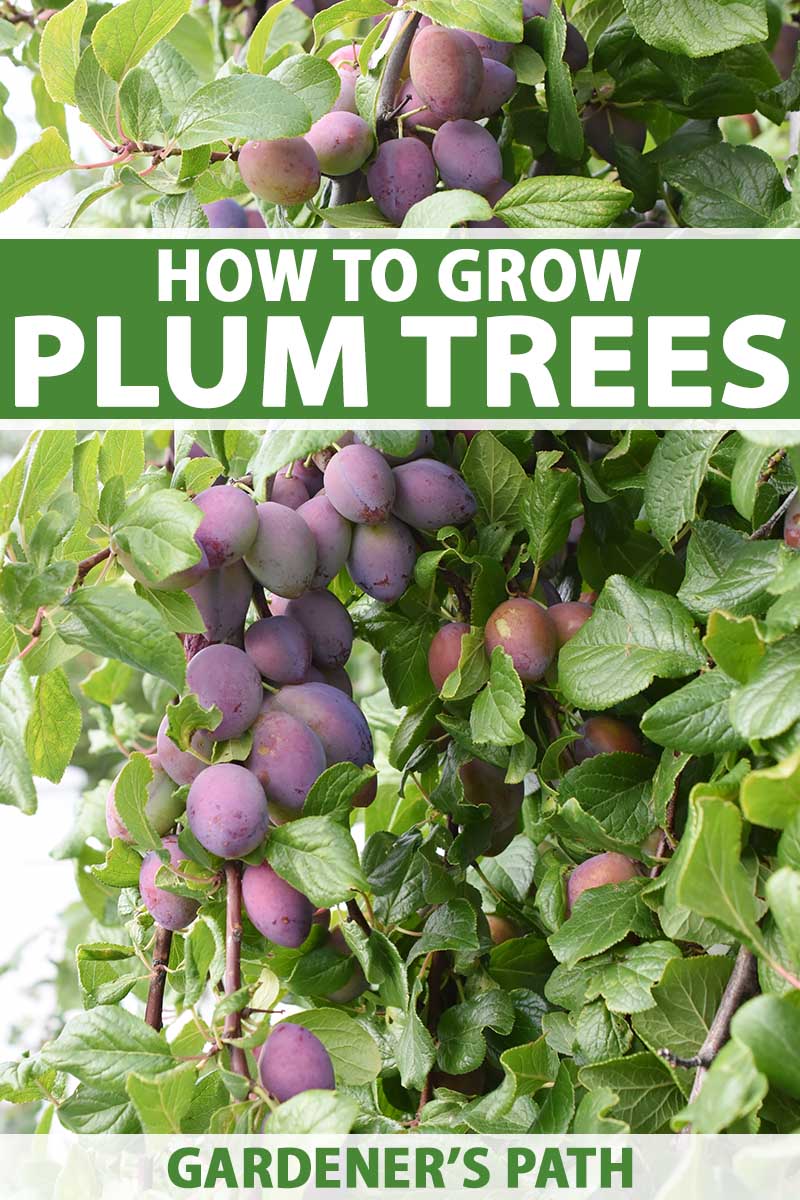
We hyperlink to distributors that will help you discover related merchandise. If you happen to purchase from one in all our hyperlinks, we could earn a fee.
Plum bushes are available in teeny-tiny dwarf sizes and towering, 40-foot-tall choices. Some develop sugary candy, juicy fruits and others have petite, tangy ones.
In different phrases, if you need choices, you’ve bought choices.
The showy spring show of pink, white, or purple blossoms is only a bonus. However for decorative plums, it’s the principle focus. That ought to inform you how fairly the blossoms could be on the fruiting sorts.
That will help you develop bushels and bushels of flavorful fruits, right here’s what this information will cowl:
Plums are broadly categorized as both Asian (P. salicina), European (P. domestica and P. cerasifera), or hybrid.
Some folks add North American indigenous sorts, like P. americana, P. nigra, P.angustifolia, and P. maritima, to the combo.
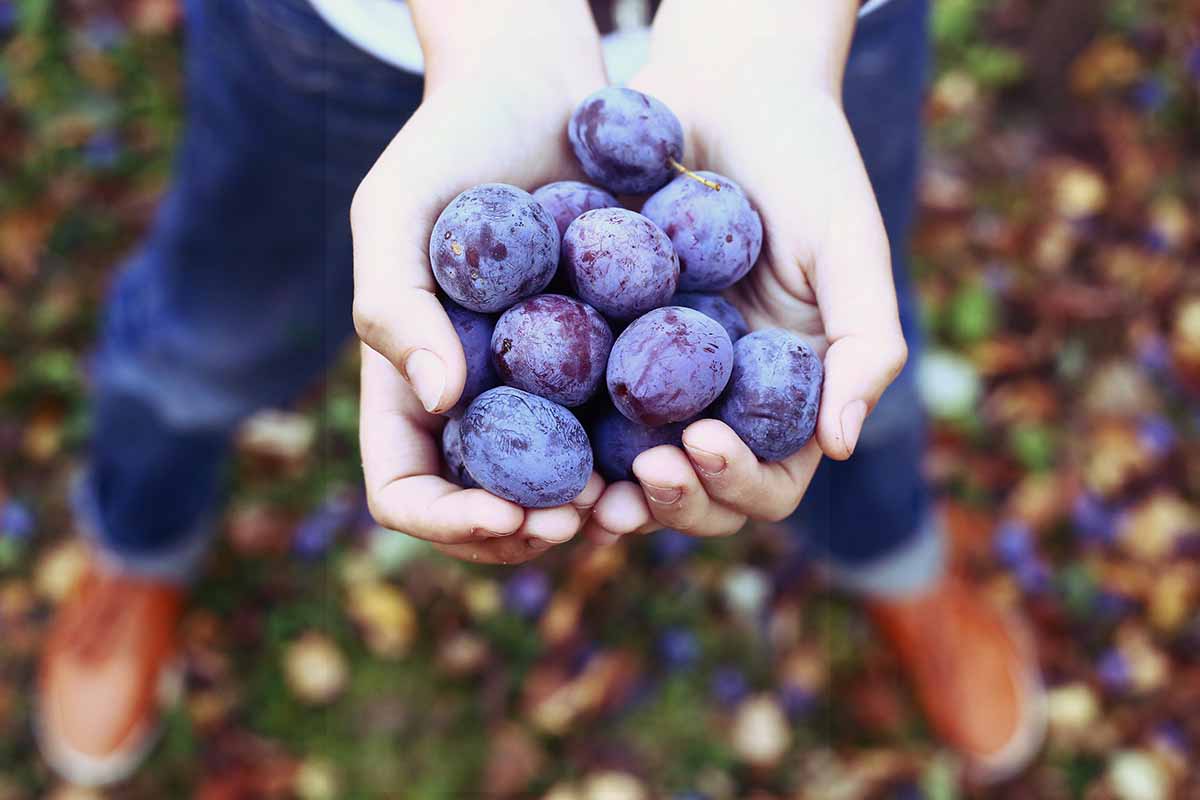
The pruning necessities differ barely relying on which sort you’ve bought, however rising every of those is in any other case comparable.
Most plums aren’t self-fruitful, and that is the place the species is essential. A European plum can’t pollinate an Asian one, so if you need fruits, you often must develop two cultivars of the identical sort. Don’t fear, we’ll clarify all that in a minute.
The exceptions are the few cultivars like ‘A. U. Amber’ and ‘Methley,’ that are self-fruitful – so don’t quit your plum desires if you happen to solely have room for one tree.
Cultivation and Historical past
P. domestica originated close to the Caucasus Mountains and has doubtless been in cultivation for almost 2,000 years. Historical Romans cultivated the bushes of their gardens.
Plums have been regularly introduced by settlers from western Asia to Europe and ultimately North America.
Our earliest report of prunes within the area comes from Prince Nursery, which was established in Flushing, New York, in 1737. Of their 1771 catalog, they marketed 33 totally different plums on the market.
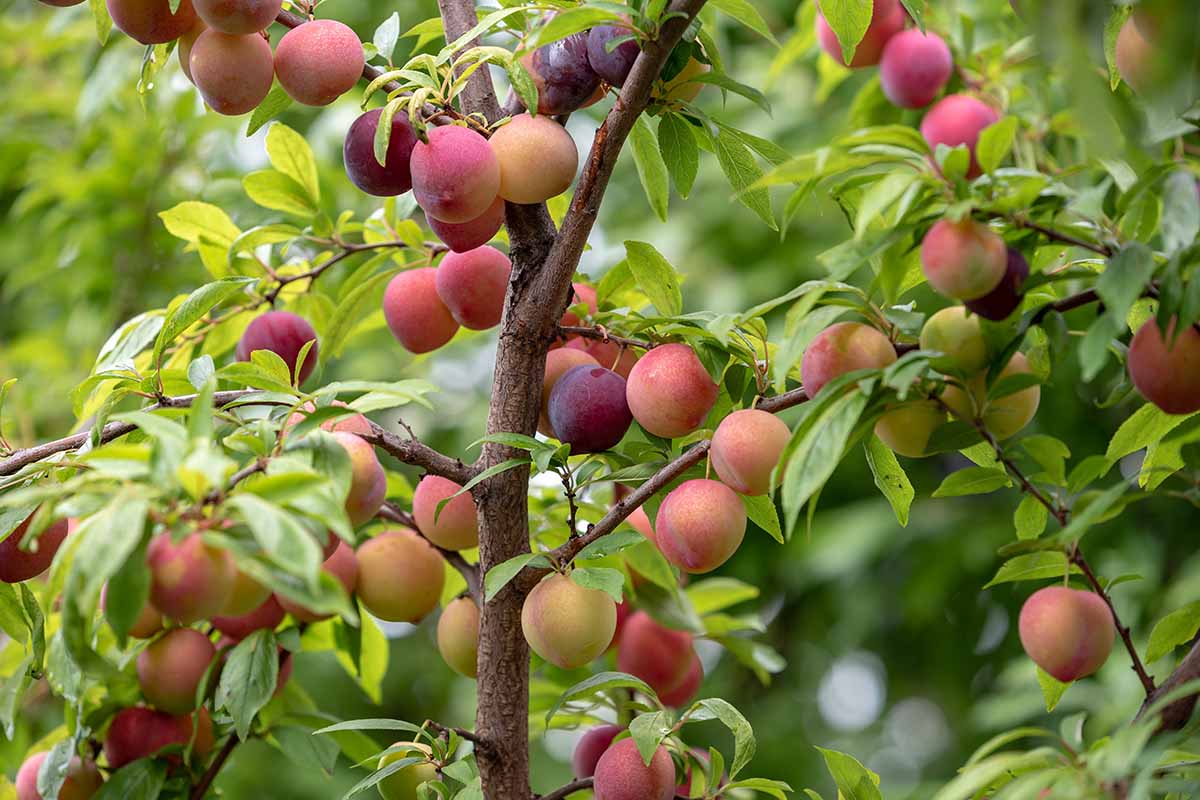
Asian or Japanese plums, which originated in China alongside the Yangtze River Basin, have been launched into Japan and later South Africa, the Philippines, the West Indies, and Australia. They reached North America within the 1800s.
As of late, the overwhelming majority of plums grown commercially within the US are present in California, however they will develop in just about each state, in USDA Zones 4 by way of 9.
There are additionally decorative plum species which might be grown for his or her extravagant spring show. They are going to produce small fruits, that are technically edible, however they’ve massive pits and solely slightly little bit of flesh.
We’re going to concentrate on the edible ones on this information.
Propagation
You must plan forward when planting plums. The soil pH needs to be round 6.0 to six.5, and if it isn’t, you’ll need to begin adjusting the pH the 12 months earlier than you plant.
Check your soil effectively forward of planting.
It’s totally doable to develop a plum tree from the seed that you simply’ll discover inside the middle of the pit. Nonetheless, this works finest with native species quite than European or Japanese sorts.
That’s as a result of European and Japanese sorts are much less prone to produce fruit, or to provide fruit that’s just like the fruit that you simply bought the pit from.
A lot of the fruits you get from the grocery retailer weren’t grown from seed, they have been grown on crops that have been grafted. Meaning there’s a variety of distinctive DNA in there, and who is aware of what’s going to come out in your new specimen.
Planting seed is a enjoyable exercise for the household, however it’s not the way in which to go if you’re critical about propagating a productive tree.
From Cuttings
Rooting a reducing is an efficient approach to reproduce a plant that you simply love. Whereas seed propagation is unpredictable, a reducing offers you a precise clone of the mother or father.
Within the winter when the climate is dry and the tree is dormant, take a reducing from a younger department that’s concerning the diameter of a pencil. The reducing needs to be about six to 12 inches lengthy.
Lower the bottom at a 45-degree angle. This helps to remind you which ones aspect is down, makes it simpler to slip the reducing into the soil, and will increase the floor space.
Dip the top of the department in rooting hormone. You possibly can skip this step, however it tends to enhance rooting.
Rooting hormone powder is fairly low-cost, and if you happen to plan to take extra cuttings in your gardening journey, it’s value having round.
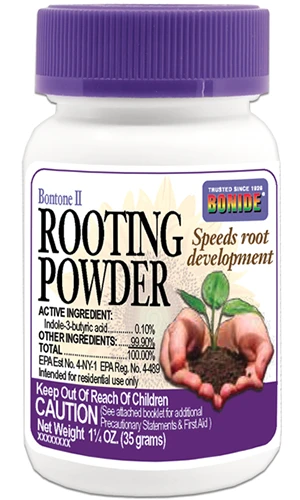
Bonide Bontone II Rooting Hormone
Choose up Bontone II Rooting Powder in a 1.25-ounce bottle at Arbico Organics.
Place the reducing in a six-inch pot full of potting soil so a few third of it’s beneath the soil line.
Water the soil effectively and place in an space with shiny oblique mild. Keep soil moisture as wanted.
As soon as the reducing begins to develop new progress, regularly transfer it to a sunny spot outside, assuming there’s no threat of frost.
Harden it off first over the course of per week, including an hour of solar publicity every day.
When there are not less than 4 new leaves, you may transplant your rooted reducing into the bottom.
Transplanting Naked Roots
Plum bushes are sometimes offered as naked root specimens.
If you are going to buy a naked root specimen, when it arrives at your home, open the package deal and verify to ensure the roots are nonetheless moist. In the event that they aren’t, add water.
Maintain your naked root in an space the place it’ll keep cool, however not freezing and never scorching, out of direct daylight. Earlier than planting, soak the roots in water for 2 to 4 hours.
While you’re able to transplant, comply with the instructions for planting a potted tree as described beneath.
Transplanting Potted Nursery Vegetation
Place bushes about 20 toes aside, relying on the sort and its mature dimension. Put together the soil by digging 3 times as extensive and about as deep because the container.
Work plenty of well-rotted compost into the excavated soil and take away the plant from its container. Gently tease aside and loosen up the roots within the rootball.
Decrease the basis ball into the opening and fill in round it with the blended soil. Water effectively to settle any air pockets, and add extra soil if obligatory.
Naked roots could be unfold over a mound of soil within the gap.
Most fashionable plums, in the event that they’re not own-root, are grafted onto peach or myrobalan (P. cerasifera) rootstock. The graft needs to be sitting simply above the soil line whenever you transplant.
Water in your transplants. Whereas older specimens are capable of stand up to some drought, youthful bushes can’t. They want common and constant water.
The right way to Develop
Location is extraordinarily essential when siting plums.
For example, if you happen to reside in Zone 7 or beneath, keep away from putting your bushes in opposition to a south-facing concrete or brick wall.
The warmth mirrored off the wall can encourage the bushes to flower early, which leaves them uncovered to blossom-killing frosts.
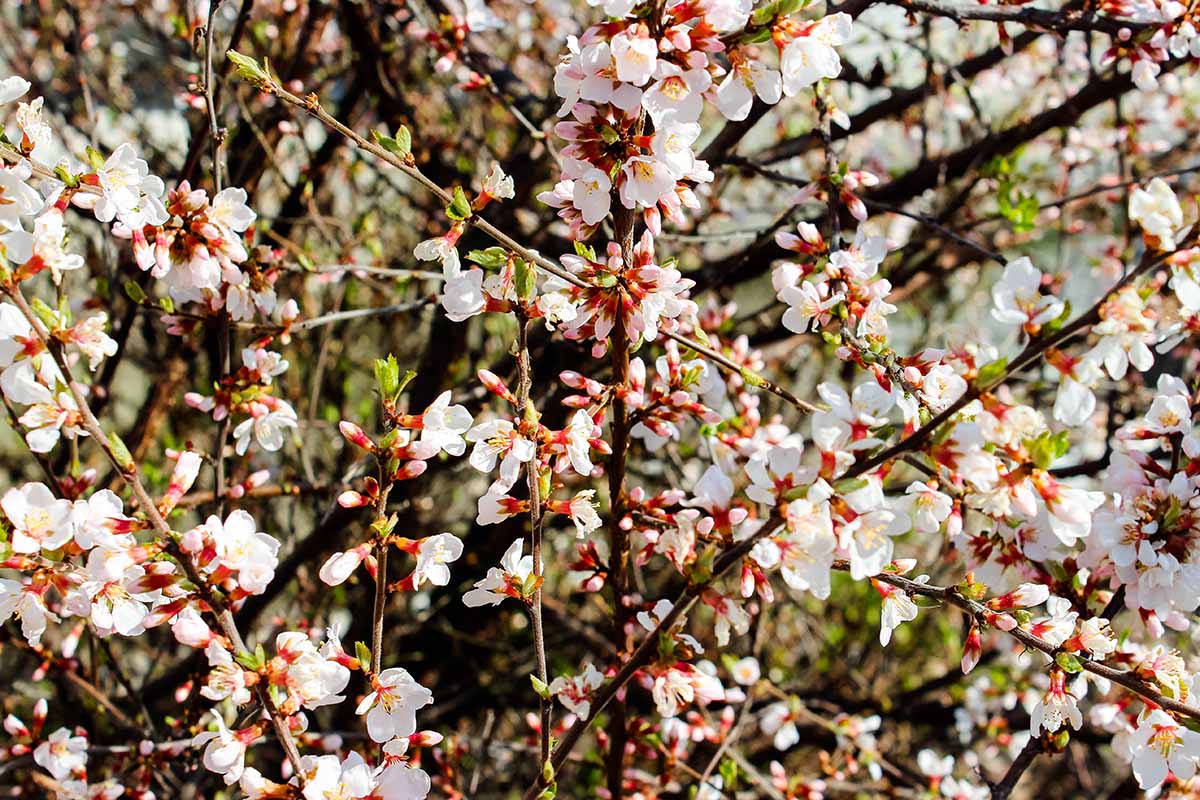
Ideally, you’d plant on the higher space of a mild slope, however not all of us have such excellent situations. You need to keep away from low-lying areas, which are typically colder and wetter than larger areas.
Most plums do finest in full solar, however some can fruit even in partial solar. Plant your bushes the place they’ll obtain not less than six hours of daylight per day.
Younger specimens needs to be stored moist, and the soil shouldn’t be allowed to dry out in any respect. Older bushes are extra tolerant of dry situations as a result of they develop an intensive root system to entry water within the floor.
Add water throughout an prolonged dry interval or when the highest three to 4 inches of soil are completely dry. Don’t await the foliage to begin wilting earlier than you suppose so as to add water.
By that time, the tree is already confused, and this can make it extra inclined to pests and ailments.
Six months after planting, begin your feeding routine. Give them a 10-10-10 NPK granular fertilizer unfold evenly contained in the dripline. Water the granules in after software.
The next 12 months, feed in early spring and once more in late summer time. After the tree reaches maturity, you don’t must fertilize until you take a look at the soil and discover it’s extraordinarily poor.
Nonetheless, heaping well-rotted compost across the tree however not touching the trunk is all the time welcome.
When rising in alkaline soil, Prunus species are vulnerable to chlorosis, making water and common fertilization important.
Maintain weeds away from contained in the drip line. These can harbor pests and illness pathogens and compete with the tree for vitamins, particularly when it’s younger.
Within the occasion of a late blossom-killing frost, there usually isn’t a lot you are able to do to guard your bushes.
Nonetheless, you probably have only one or two bushes and you’ve got among the previous incandescent Christmas lights, you may wrap them in these and switch them on throughout chilly nights to guard the blossoms.
Fluorescent bulbs gained’t work, nonetheless, since they don’t generate as a lot warmth.
As long as the blossoms aren’t killed off by frost that 12 months, you must begin seeing fruit about three years after transplanting.
Talking of fruiting, these bushes are reliant on pollinators to provide fruit.
As a result of they bloom for such a brief interval within the spring, you probably have a particularly moist or windy interval whereas they’re in bloom, flying pollinators like bees won’t be capable to do their job.
If that occurs, you won’t get any fruit that 12 months or the crop shall be a lot smaller than regular.
As with all stone fruits, plums want a sure variety of chill hours to provide a harvest. Chill hours are when the temperature is between 32 and 45°F through the dormant season.
Broadly talking, European plums want about 400 chill hours whereas Japanese varieties want over 700.
North American native sorts often want fewer chill hours, and a few hardly want any in any respect. Chickasaw plums, as an example, solely want about 200 chill hours.
Rising Suggestions
- Shield bushes from blossom-killing frosts by planting them on the higher a part of a slope and away from heat-reflecting partitions.
- Maintain younger specimens watered effectively; older ones can tolerate some drought.
- Feed younger bushes twice a 12 months with a balanced fertilizer.
Pruning and Upkeep
Plums want particular pruning to maintain them productive and to keep away from illness.
European plums needs to be pruned right into a central chief form and so they don’t want aggressive pruning as soon as they’re older.
Japanese varieties are pruned right into a vase form and require extra pruning.
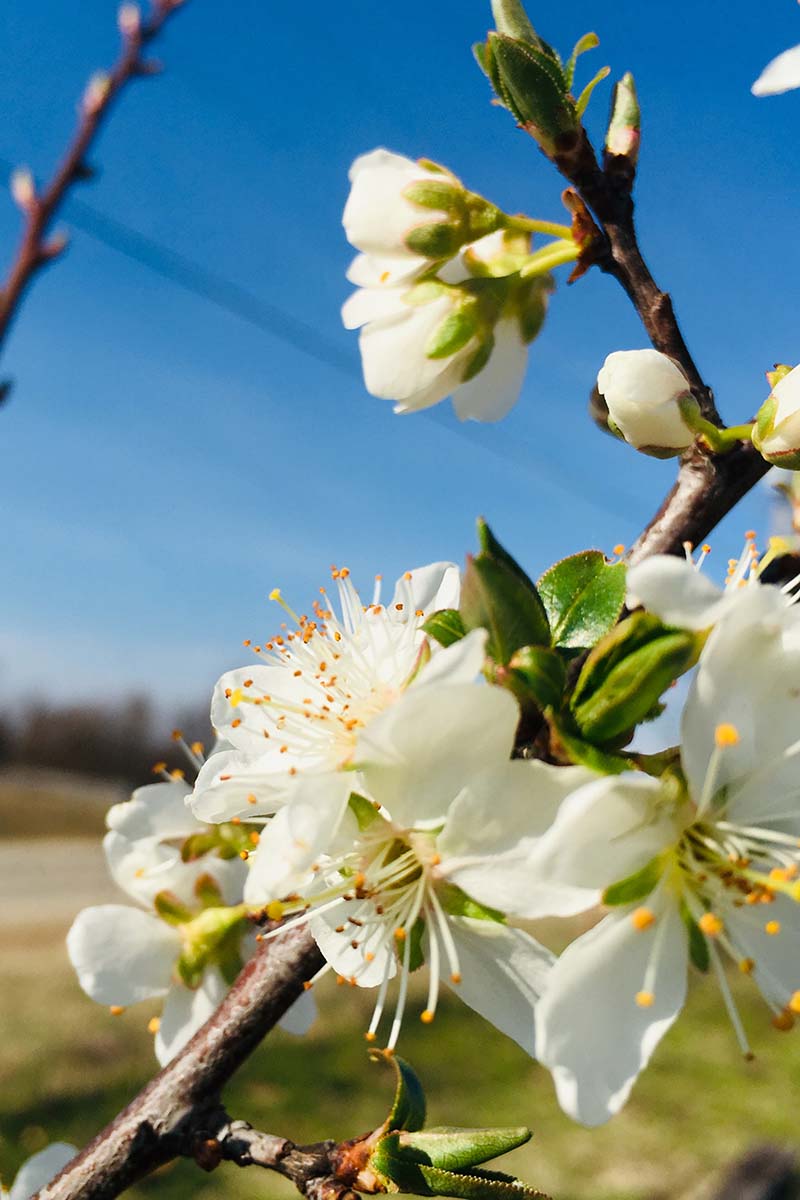
American sorts don’t should be formed, although you must take away a few fifth of the older branches annually to encourage younger progress.
No matter selection you’re rising, all the time take away any lifeless, diseased, or deformed branches whenever you see them.
European and Japanese sorts needs to be thinned simply after the fruits kind. You need to depart one fruit spaced each 4 inches.
For tips about the right way to prune plums, try our information (coming quickly!).
One other essential and infrequently forgotten a part of plum upkeep is eradicating the fallen fruit. Not solely does this fallen materials have the potential to harbor pests and pathogens, however it could actually make a slimy mess that presents a slipping hazard.
Additionally, keep in mind that rats love fallen fruit. If you happen to don’t clear it up within the fall, you might be inviting rodents into your yard (and doubtlessly your house).
Species and Cultivars to Choose
European sorts are inclined to have a vase form and produce sweeter fruits.
Nearly any European sort can be utilized to pollinate one other European sort, and these all bloom per week or two after Asian and American sorts.
Japanese sorts have a extra spherical, open kind, and so they produce bigger fruits. Just about any American or Japanese sort can be utilized as a pollinator for a Japanese species.
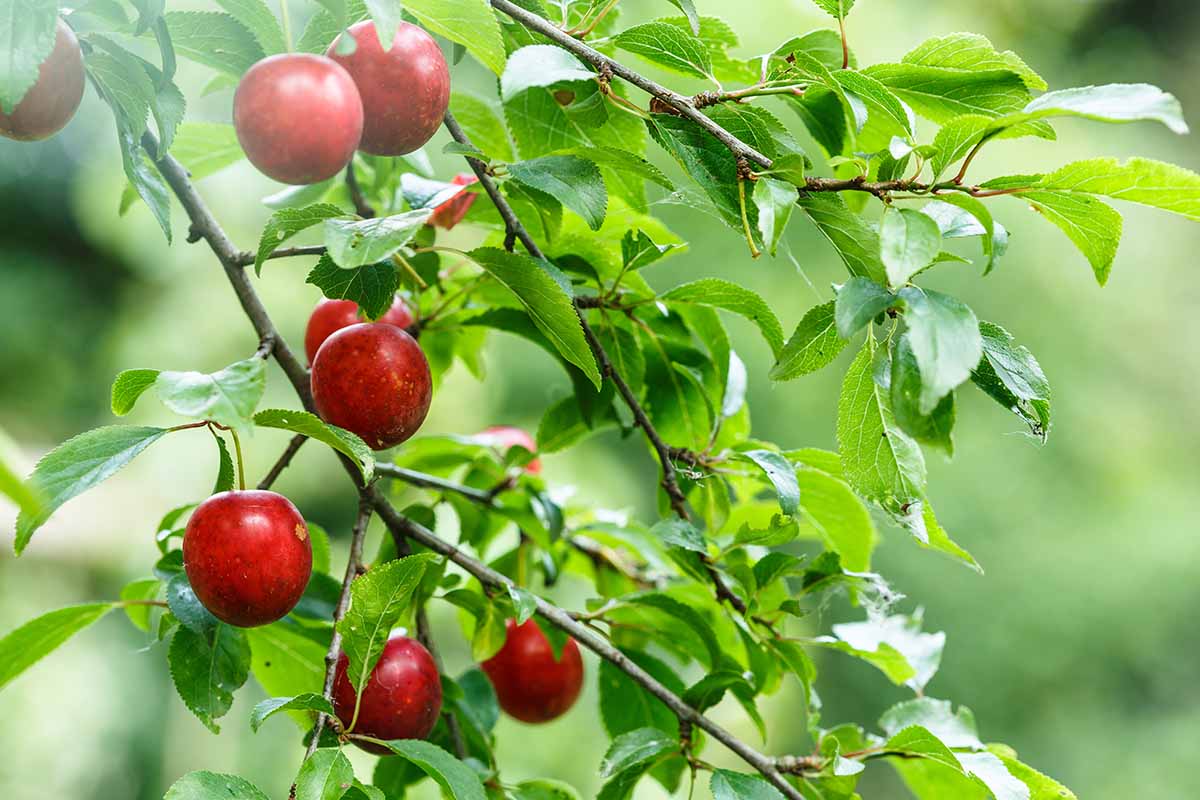
American sorts are typically extra shrub-like and these are the hardiest of the three, capable of stand up to colder situations. The fruits are additionally the smallest.
Most American sorts out there on the market are hybridized with a Japanese tree, although yow will discover a couple of non-hybrid cultivars.
Unsure what sort to plant? Check out these beneficial varieties:
American
Whereas they will differ in dimension, most American plums develop to about 20 toes tall and produce heaps of small, one-inch fruits.
These fruits aren’t as candy or juicy as these of different species, however they’re pleasant nonetheless. If you happen to like making fruit leather-based or jams, they’re a implausible choice.
Many individuals merely develop them for his or her decorative worth. They produce lots of showy blossoms that blanket the tree within the early spring and so they scent heavenly.
The reddish-purple fruits are a colourful addition to the yard even if you happen to don’t eat them. And don’t fear – quail, turkeys, and plenty of different wildlife will snack on the fruits for you.
These bushes will ship out suckers and unfold, which can be thought of a superb or a foul factor, relying on the way you take a look at it. As a bonus, native plums are self-fruitful, so that you solely want one.
However why not plant a number of? Yow will discover these out there as multi-stem shrubs or single-stem bushes, relying in your wants.
They make efficient windbreaks, and may fill in difficult areas that different bushes gained’t thrive in.
Search for cultivars comparable to ‘Pipestone,’ ‘Toka,’ and ‘Underwood,’ which have bigger fruits and a extra spectacular floral show than the species.
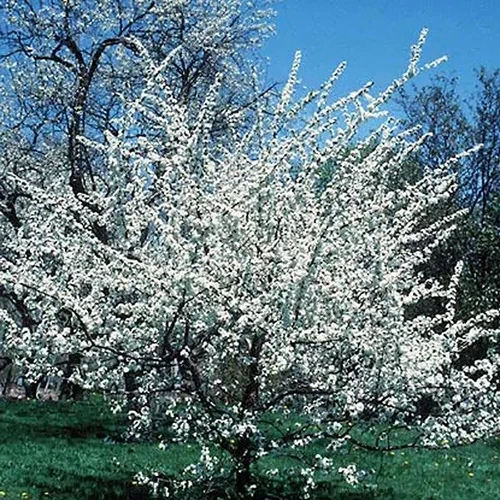
American Plum
Or you may go for the previous dependable species plant, which is gorgeous, powerful, hardy, drought tolerant, and can adapt to most soil situations in Zones 3 by way of 9.
Bought? Head to Nature Hills Nursery for a two- to three-foot naked root or a reside tree in a #5 container.
Brooks
My grandparents’ dwelling was surrounded by plums, and ‘Brooks’ was all the time my favourite.
The blue fruit of this Italian plum sport is nice with a tart snap to the pores and skin when it’s younger, although left to mature, it turns into a sugary delight. And the yellow flesh is easy and flavorful.
No shade on Italian plums, however ‘Brooks’ fruit matures a couple of weeks earlier than that of the mother or father sort, and it’s only a contact extra flavorful.
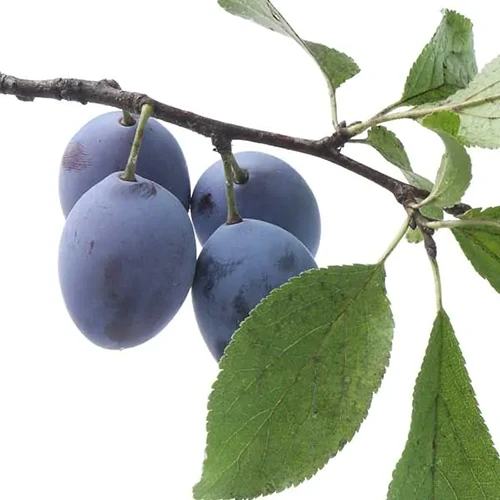
‘Brooks’
This tree is hardy in Zones 5 by way of 9, and grows to a manageable 15 toes tall.
It’s a must to give this one a strive! If you happen to agree, go to Nature Hills Nursery to buy a reside plant in a #3 container.
Burgundy
This Japanese cultivar grows bushels of almost black-skinned plums encasing a juicy, blood-red inside.
The pit is especially small, which means there’s extra of that candy flesh for the taking. Plus, it’s fairly cold-hardy for an Asian sort, capable of develop in Zones 5 by way of 8.
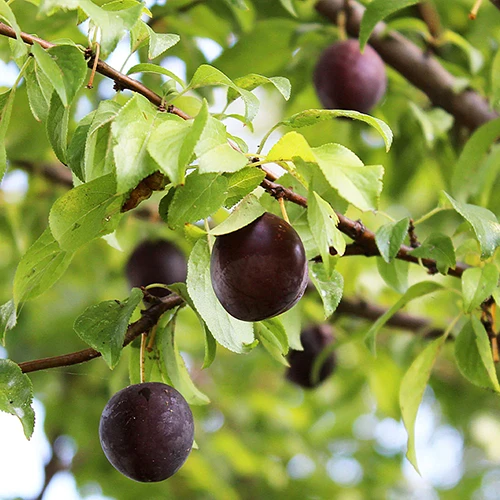
‘Burgundy’
Harvesting can be straightforward on this tree as a result of it doesn’t develop a lot taller than 15 toes.
Quick Rising Timber carries reside crops in three- to four- or four- to five-foot heights.
Hollywood
P. cerasifera ‘Hollywood’ is prepared for its activate the stage. Not solely is it stunning, with deep purple foliage, however the wealthy and candy fruits are implausible.
This dwarf sort grows to about 15 toes tall and is as helpful as a decorative as it’s a fruit tree. The lots of pink blossoms that seem within the spring are effectively value having round.
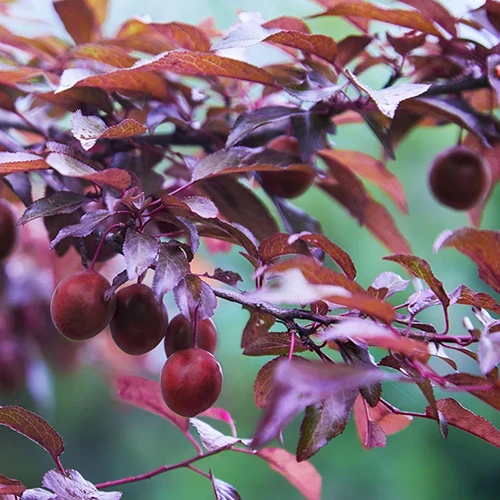
‘Hollywood’
Hardy in Zones 5 to 9, it’s out there at Quick Rising Timber in three- to four-, four- to five-, and five- to six-foot heights.
Methley
Plenty of folks choose 25-foot-tall ‘Methley’ as a result of it’s self-fruitful, so that you don’t must have a couple of plum tree to provide a harvest.
But it surely’s truly one of the vital productive plum cultivars on the market. And you may pair it with a good friend for much more fruit!
This Japanese cultivar is disease-resistant, can tolerate drought, and can fruit even in partial solar. The branches are extraordinarily robust and are capable of assist heavy fruit manufacturing.

‘Methley’
These bushes want further spacing as a result of they have a tendency to unfold. Don’t fear, they’ll pay you again tenfold with loads of fruit in alternate for his or her grasping nature.
Snag a four- to five-foot reside specimen in a paper pot at Nature Hills Nursery for rising in Zones 4 by way of 9.
Managing Pests and Illness
It looks as if all stone fruits have a fame for affected by a variety of widespread pests and ailments.
Whereas plums aren’t any exception, they might be slightly sturdier than their apple and peach buddies. Nonetheless, there are numerous points to be careful for. These are the most typical:
Herbivores
Rabbits, mice, and deer will all eat the bark of those bushes.
It’s not often an issue on older specimens which may stand up to slightly harm, however with youthful bushes, a deer might devour a complete plant in an evening or two.
Fencing is the best choice to guard younger bushes, whether or not you place small fences across the particular person itself or fence off your entire orchard. You may as well set traps to seize mice, although they trigger far much less harm than bigger critters.
When fruit is current, birds, squirrels, and different herbivores gained’t hesitate to feed in your fruit buffet.
They gained’t usually eat sufficient to make a lot of a distinction, however it’s one thing value being conscious of. If you happen to actually need to defend your fruits, use netting.
Bugs
It shouldn’t come as a shock that North American native forms of plums don’t entice most of those pests as readily as non-native species.
Regardless of which species of plum you develop, it’s all the time a good suggestion to put traps round your orchard or particular person fruit bushes as a way to establish pests earlier than they turn into a major problem.
Pheromone traps, sticky traps, and easy remark can all aid you to determine if pests are eyeballing your bushes.
Aphids and scale bugs will assault plums, however they hardly ever trigger critical issues and may often simply be ignored.
Cultivating a wholesome backyard setting full of plenty of helpful bugs is the easiest way to sort out most of these pests.
Keep away from utilizing pesticides when the flowers are current until they’re focused, since you run the chance of killing pollinators like bees. You also needs to keep away from spraying within the few weeks main as much as harvest.
The next are the most typical pests that you could be come throughout when rising plums:
Apple Maggots
Relying on the place you reside, apple maggots (Rhagoletis pomonella) are principally an issue on late-ripening sorts like ‘President’ or ‘Valor.’
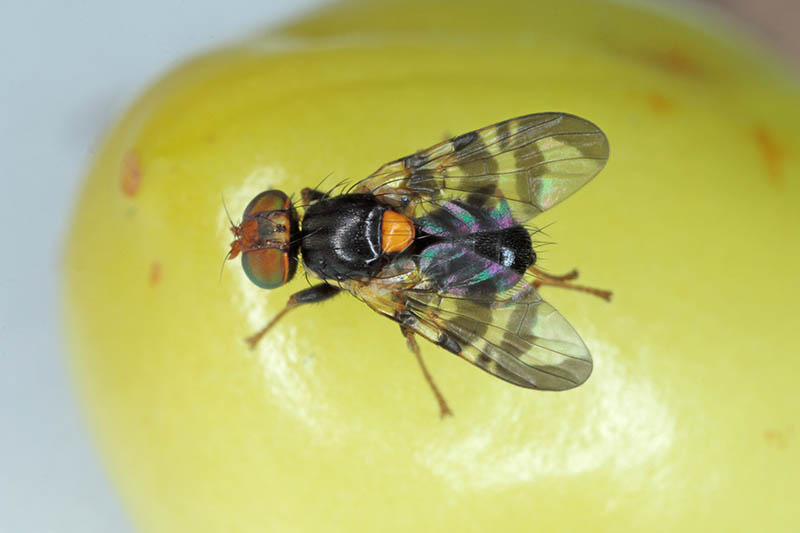
Plums that ripen through the summer time gained’t be infested by apple maggots as a result of the timing of the life cycle of the pest and the fruit ripening don’t coincide.
However when the timing is true, apple maggots could be essentially the most damaging pest you’ll come throughout.
Carefully associated to cherry fruit flies, apple maggots appear like tiny home flies with white banding. It’s not the adults that it’s a must to fear about, although – it’s the larvae, which emerge after the grownup flies lay eggs below the pores and skin of the fruit.
When the maggots emerge they start consuming their method by way of the fruit, leaving telltale tunnels behind. These tunnels begin to rot, and over time, your entire fruit rots and falls from the tree.
Management includes taking an built-in method involving natural pesticides and trapping. Learn our information to be taught all about built-in pest administration.
Plum Curculios
I don’t know why, however the title plum curculio (Conotrachelus nenuphar) appears like some cute little critter to me.
Possibly it’s as a result of, dwelling west of the Rockies, I’ve by no means needed to take care of this drawback up to now. However I’ll inform you there’s truly nothing cute about plum curculios.
These snout-nosed beetles are completely devastating for apples and peaches, and whereas they’re much less of an issue in plums, an infestation continues to be no stroll within the park. The quarter-inch-long beetles are darkish brown with mottled grey and white patches.
The grownup females lay eggs within the pores and skin of the fruit the place the larvae hatch and start devouring the flesh inside.
The fruit falls to the bottom, the maggots dig into the soil to pupate, and the life cycle continues.
Begin waiting for these pests a couple of weeks after the blossoms fade in your bushes. You possibly can set out sticky traps to seize them.
Pyrethroids can be utilized to kill the adults and neonicotinoids could also be utilized to kill the larvae, however these kinds of broad spectrum pesticides may cause extra hurt than good.
They will kill helpful bugs and upset the concord in your backyard – no judgment although if you happen to’ve gotta do what you gotta do.
As an alternative, I like to recommend that gardeners strive a multipronged method. Head out within the early morning and shake your plum bushes.
I do know it sounds bizarre, however if you happen to place tarps beneath them, the beetles will drop and you’ll scoop them up and get rid of them in soapy water.
You also needs to all the time clear up any fallen fruit as effectively, as a result of that’s the place the larvae reside.
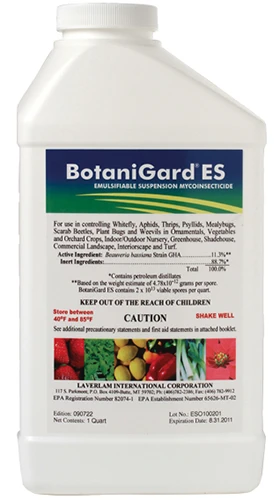
BotaniGard ES
Then, apply a product that accommodates the helpful fungus Beauveria bassiana, like BotaniGard ES. It’s out there at Arbico Organics in quart or gallon containers.
This product could also be used to handle a spread of soft-bodied bugs. It gained’t kill adults, however it’ll kill the larvae.
Observe the producer’s instructions fastidiously and count on to reapply it a number of occasions all through the season.
Root-Knot Nematodes
There are a number of species of root-knot nematodes that assault plum bushes, together with Meloidogyne incognita and M. javanica.
Peach root-knot nematodes (M. floridensis), one other species that will infest plums, have been first recognized in Florida, however they’ve since been discovered all through the US.
These microscopic worms can infect all members of the Prunus genus, and different hosts past that.
They trigger bulbous knot-like growths known as galls on the roots that scale back the quantity of water and vitamins the tree can entry, leading to diminished and stunted progress.
Whereas an older tree can often survive an infestation, although it’ll endure decreased vigor, youthful ones are extra inclined and can greater than doubtless die.
Whereas there are issues you are able to do to deal with the issue, I’m not going to lie, the outlook isn’t nice. We’ve a information to root-knot nematodes to stroll you thru what you should know.
Wooden Borers
Tree borers are moths that lay eggs within the bark of Prunus bushes. There are three fundamental species that assault plums: the peach tree borer (Synanthedon exitiosa), the lesser peach tree borer (S. pictipes), and the plum borer (Euzophera semifuneralis).

Each forms of peach tree borers are busy laying eggs through the summer time whereas the plum borer can lay eggs within the late spring and late summer time.
The grownup moths search for spots on the tree the place the bark has been broken, and once they discover a spot they lay their eggs there.
Because the larvae emerge they tunnel by way of the tree. This will trigger girdling, and exposes the tree to different forms of pests and ailments.
Peach tree borers look slightly bit like wasps. They’re black and pink with clear wings, whereas the lesser peach tree borers are black and white with clear wings. Plum borers look extra like a conventional moth, with brown, grey, and cream coloring.
That is the place utilizing pheromone traps is useful. If you happen to place traps close to your bushes, you may monitor populations and know when it’s time to get to work.
You may as well be pretty assured that the pests are current if you happen to see sap oozing out of the bark, and frass, which seems to be like sawdust.
Denying the moths a spot to put their eggs is step one in stopping an infestation. You need to do all the things you may to keep away from damaging your bushes, so prune fastidiously.
Don’t ever nail something right into a tree, and use warning when trimming close to the bottom. You also needs to attempt to hold herbivores away out of your bushes.
Illness
It’s not unprecedented for plum bushes to be contaminated with Armillaria or crown rot, however these ailments usually are not almost as widespread as the next:
Black Knot
Black knot is a springtime illness attributable to the fungus Dibotyron morbosum (syn. Apiosporina morbosa).
It thrives in wet, cool climate and it may be extraordinarily problematic on plum bushes. Japanese and American species are much less inclined than European varieties.
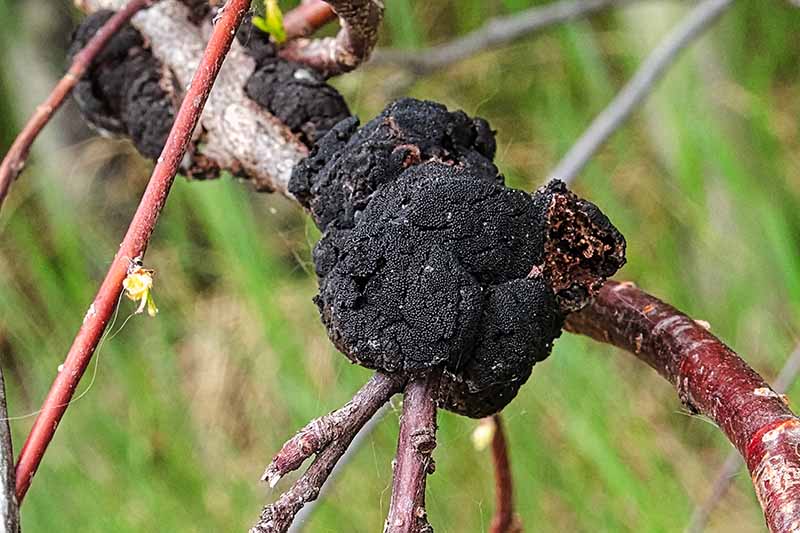
This illness solely happens when water is current and temperatures are between 55 and 75°F.
As the brand new shoots emerge within the spring, they’ll exhibit unusual swollen areas which might be pale inexperienced. After a 12 months, these swollen areas will ultimately flip into warty, elongated, black-knotted lots.
It’s not simply ugly – the lots take over woody areas on the tree and scale back manufacturing and vigor.
If you happen to’ve had black knot in your orchard just lately, a product that accommodates chlorothalonil is extremely efficient at stopping illness unfold when utilized within the early spring.
It’s additionally good at controlling black knot, however no fungicide will eradicate the illness totally.

Bonide Fung-onil
Strive Bonide’s Fung-onil, which is out there from Amazon in 16-ounce containers.
Instantly pruning off any contaminated branches may also assist to curb unfold.
Or, simply select to plant ‘Obilinaja,’ ‘Early Italian Inexperienced,’ ‘Gage,’ ‘Fellenberg,’ or ‘President.’ They’re all so immune to this fungus, they’re principally immune.
Brown Rot
Brown rot is a standard foe for peach growers, however it could actually go to plums as effectively. It’s not as problematic in these crops, attacking much less regularly and inflicting much less harm.

European plums are extra inclined than different species, and bushes rising in moist, heat areas are essentially the most inclined. When it’s current, the fungus will journey on wind and water.
This illness is attributable to the fungus Monilia fruiticola and it simply loves mummified fruit.
Don’t depart any rotten, lifeless fruit in your tree, and it’ll go a great distance towards avoiding this concern. The fungus can be unfold by pests, so avoiding infestation additionally helps.
If a tree is contaminated, the blossoms will flip brown and soggy, and the information of the branches will die again. You’ll additionally see cankers on the tree.
When the fruit develops, it’ll have brown recognizing and can quickly rot. This will actually occur over the course of a day. The fruit may mummify and stay on the tree or fall to the bottom.
The fungus that causes this illness overwinters on this mummified fruit, which is why it’s so essential to scrub it up within the winter.
Silver Leaf
Silver leaf is an extremely widespread and contagious fungal illness attributable to Chondrostereum purpureum, the spores of which journey and unfold on water.
It impacts pears, cherries, apples, elms, oaks, maples, poplars, and willows. But it surely’s particularly extreme on plums.
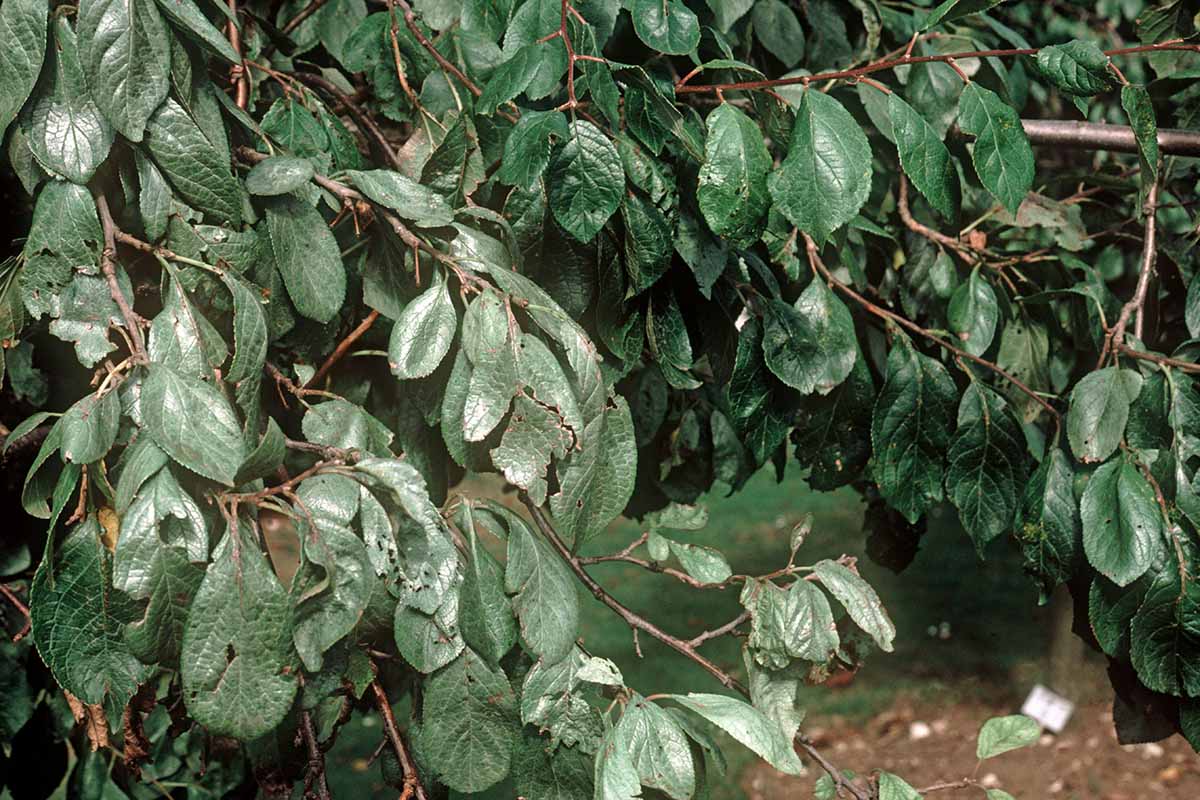
Throughout wet or humid intervals, it could actually unfold quickly. Because it spreads all through the tree, it limits the plant’s potential to move water and reduces vigor.
Because the title implies, it causes the leaves of the tree to show silver. It’s type of fairly, and appears like somebody took a can of spray paint to your bushes.
You’ll additionally see a darkening of the branches from the fungal buildings spreading there.
Earlier than you begin seeing silvering, the information of younger branches will begin to die again, however folks usually miss or misdiagnose this symptom.
This silver isn’t truly shiny. The pathogen simply modifications the way in which that the leaves mirror mild.
If only some branches are contaminated, prune them off when the climate is dry. If the illness begins to influence greater than half of the tree, you’ll must take away and get rid of it.
Avoiding silver leaf takes some planning, however it may be achieved. The fungus must discover a wound or opening to contaminate the plant.
If you happen to take warning round your tree whenever you’re trimming weeds, do your finest to stop infestations by wood-eating bugs, and by no means prune throughout moist climate, chances are high good you may keep away from it.
Harvesting
Fruits are mature someday within the late summer time or early fall. All of it relies on what particular plum you’re rising and what USDA Hardiness Zone you’re in.
‘Early Golden’ may mature in early July if you happen to’re in a light local weather, whereas ‘Valor’ gained’t be prepared till mid-October in areas with brief rising seasons.
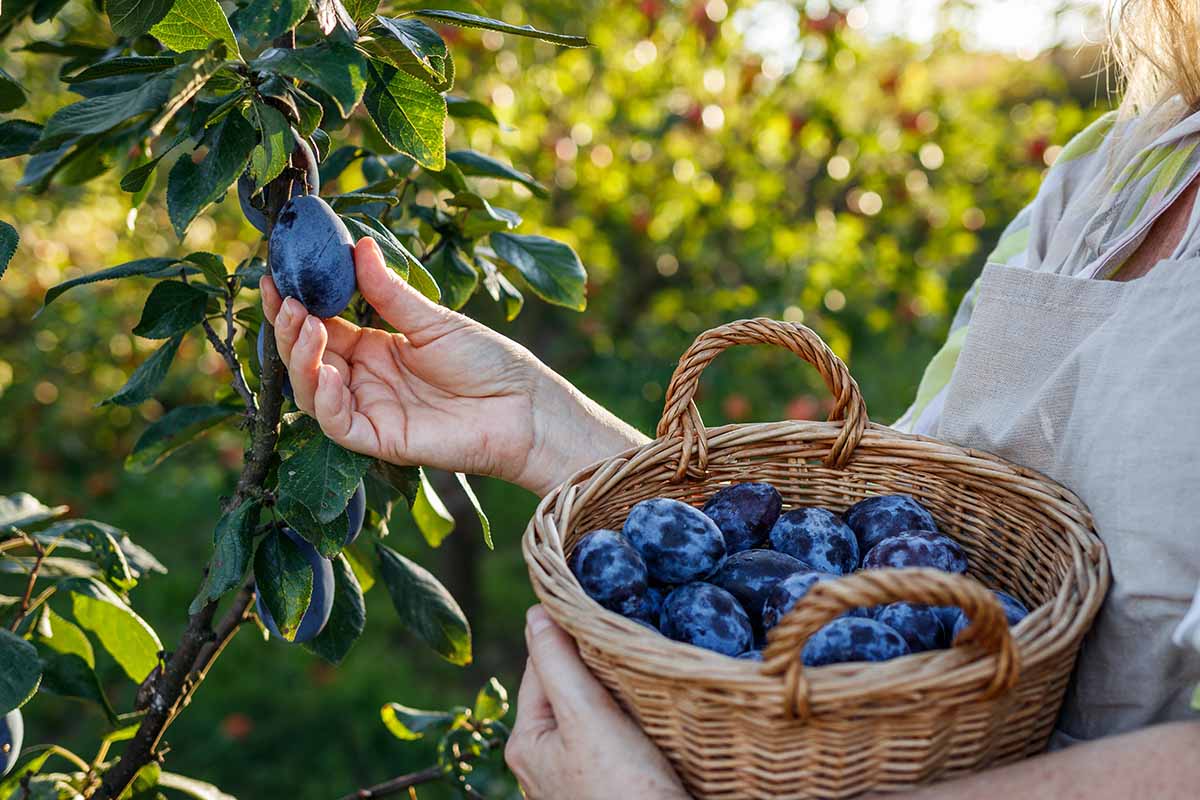
You’ll often get round three bushels from American bushes, and as much as 5 from European and Japanese sorts.
In my household, harvesting takes place through youngster labor. My grandma paid my mother a penny a plum and my mother paid me and my siblings a nickel per fruit.
I don’t know what the going price is at the moment, however spherical up the youngsters and promise them plum kuchen (zwetschgenkuchen) in cost for his or her efforts. It’s higher than money.
The fruits ought to come away simply once they’re prepared. The simplest approach to inform if it’s time is to select one and take a chew. Does it style good? Harvest away!
Preserving
Plums gained’t final lengthy off the tree. To increase their shelf life, don’t wash them till you’re able to eat them. Maintain them within the fridge crisper drawer and so they’ll final for as much as per week.
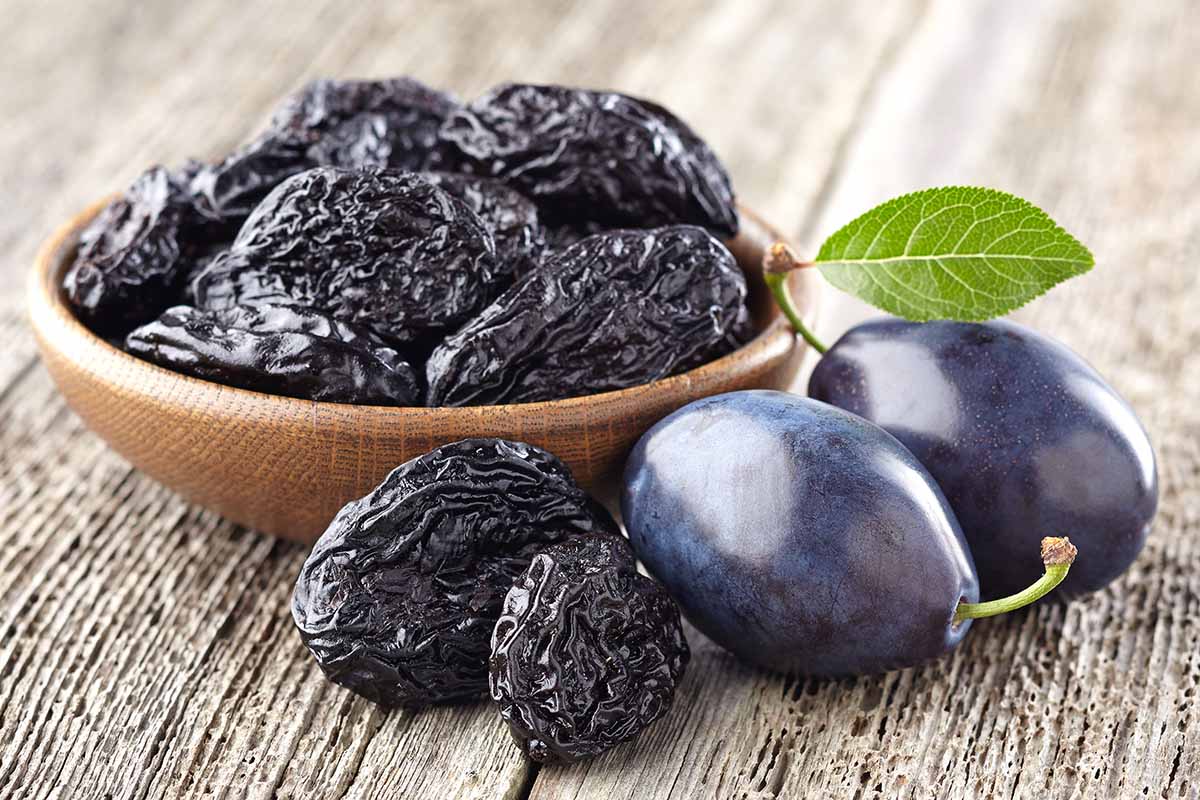
To make them last more, dry them in a dehydrator – hiya, prunes! Or you may make fruit leather-based or jam, or can them in syrup.
You may as well freeze plums by chopping them after which freezing the items on a baking sheet in order that they don’t stick collectively.
As soon as they’re frozen, you may toss them in a giant bag and seal them up. They are going to keep contemporary for about six months.
Recipes and Cooking Concepts
Plums are my absolute favourite fruit for making desserts. They’ve simply sufficient acidic zing so as to add a tangy word to distinction with all that sugar.
You completely can’t go improper with a galette. If you happen to don’t have already got a favourite recipe, our sister website Foodal has you coated.
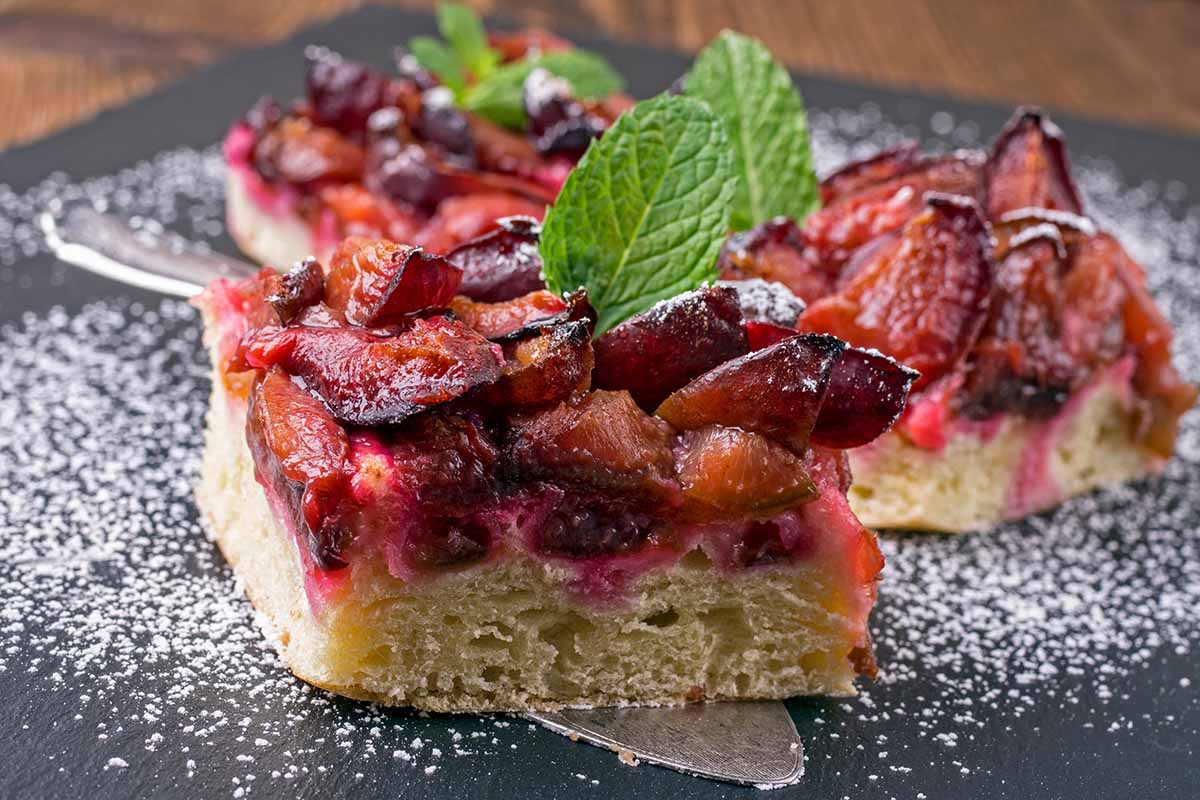
If you happen to’re planning to go on a hike with the fam, deliver plum hand pies alongside as a deal with. Begin with Foodal’s recipe and use your homegrown plums.
Or flip them right into a festive cocktail with Foodal’s sugar plum recipe.
If you happen to lack a candy tooth like I do, plums are additionally wonderful as a topping for rooster or pork.
My favourite method to make use of them is to cut them up with tomatoes, cilantro, onions, a squeeze of lime, and chilis to make a fruit salsa.
Fast Reference Rising Information
| Plant Kind: | Deciduous fruit tree | Flower/Foliage Shade: | Pink, white/inexperienced |
| Native to: | China, Caucasus area, North America | Water Wants: | Average |
| Hardiness (USDA Zones): | 4-9 | Upkeep: | Average |
| Bloom Time/Season: | Spring blossoms, summer time/fall fruit | Tolerance: | Some drought |
| Publicity: | Full solar | Soil Kind: | Loamy |
| Time to Maturity: | 8 years | Soil pH: | 6.0-6.8 |
| Spacing: | 20 toes, relying on sort | Soil Drainage: | Effectively-draining |
| Planting Depth: | Similar as rising container (transplants), graft level simply above the soil, high of the best roots just under the soil (naked root) | Attracts: | Pollinators |
| Top: | As much as 40 toes | Order: | Rosales |
| Unfold: | As much as 40 toes | Household: | Rosaceae |
| Development Charge: | Average | Genus: | Prunus |
| Frequent Pests and Ailments: | Apple maggot, root knot nematode, plum curculio, wooden borer; brown rot, black knot, silver leaf | Species: | Alleghaniensis, americana, cocomilia, domestica, mexicana, salicina, spinosa |
When the Plum Tree Blooms, the Total World Blooms
Plums are perfect for the newbie as a result of they’re adaptable and capable of tolerate some neglect.
The contemporary fruits are higher than something you’ll discover within the retailer and you’ll develop sorts that you simply’d by no means in any other case come throughout.
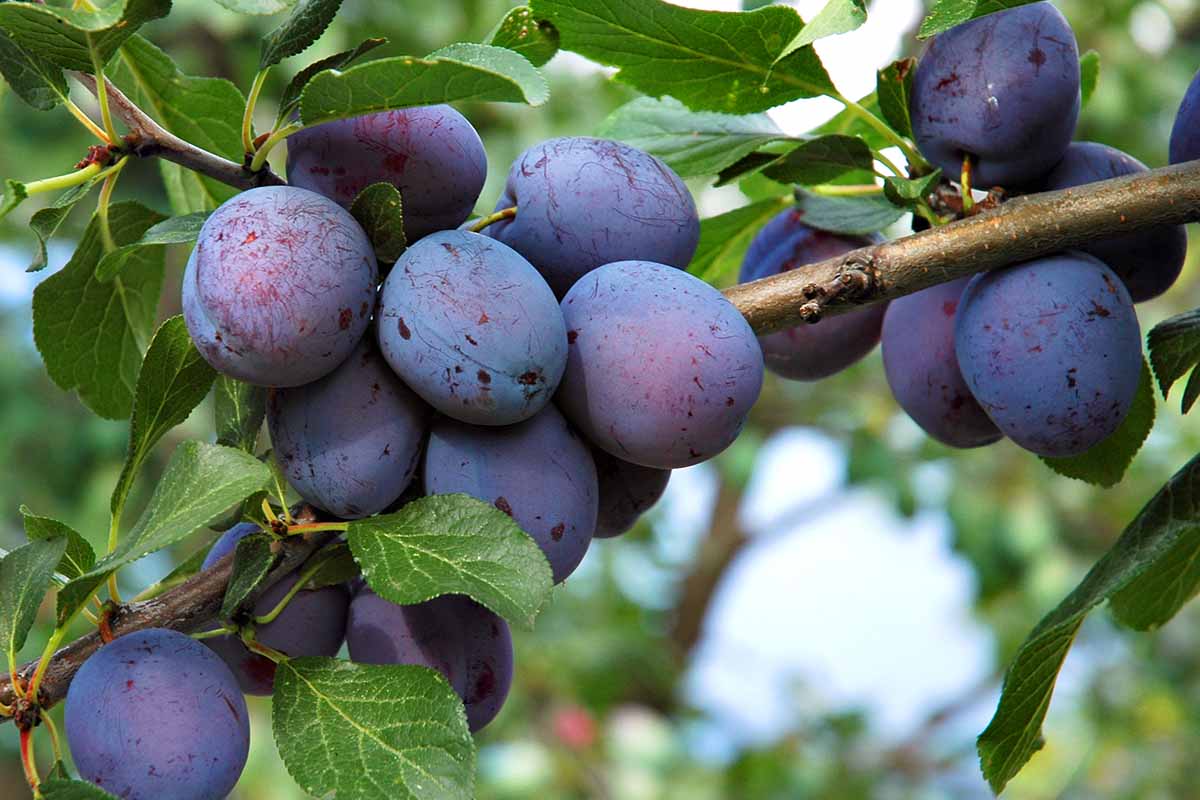
Even if you happen to solely have a small spot out there within the backyard, you may have plums.
Which kind are you going to develop? How do you propose to make use of the fruits? Share with us within the feedback.
There are heaps extra fruit bushes to get pleasure from, and if this information gave you the knowledge you wanted to begin with plums, you may discover these useful:
[ad_2]
Source link

